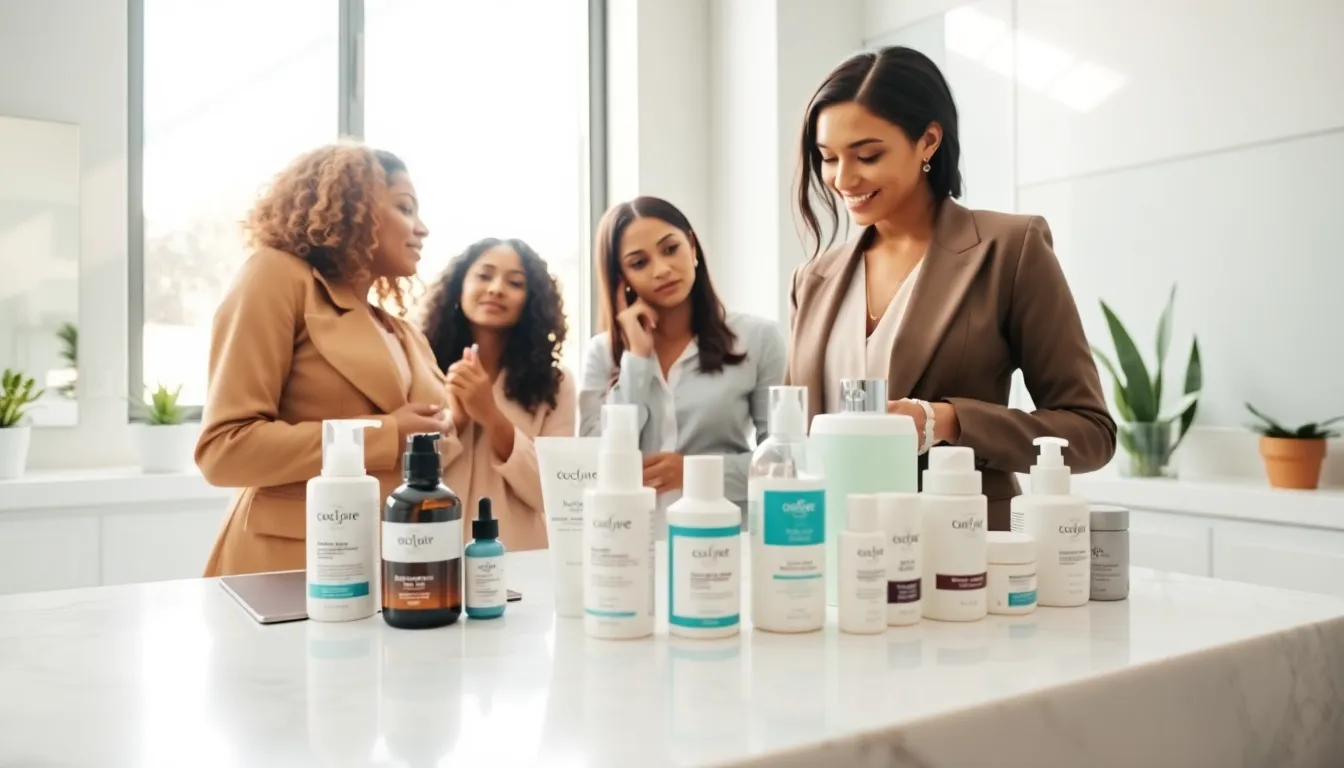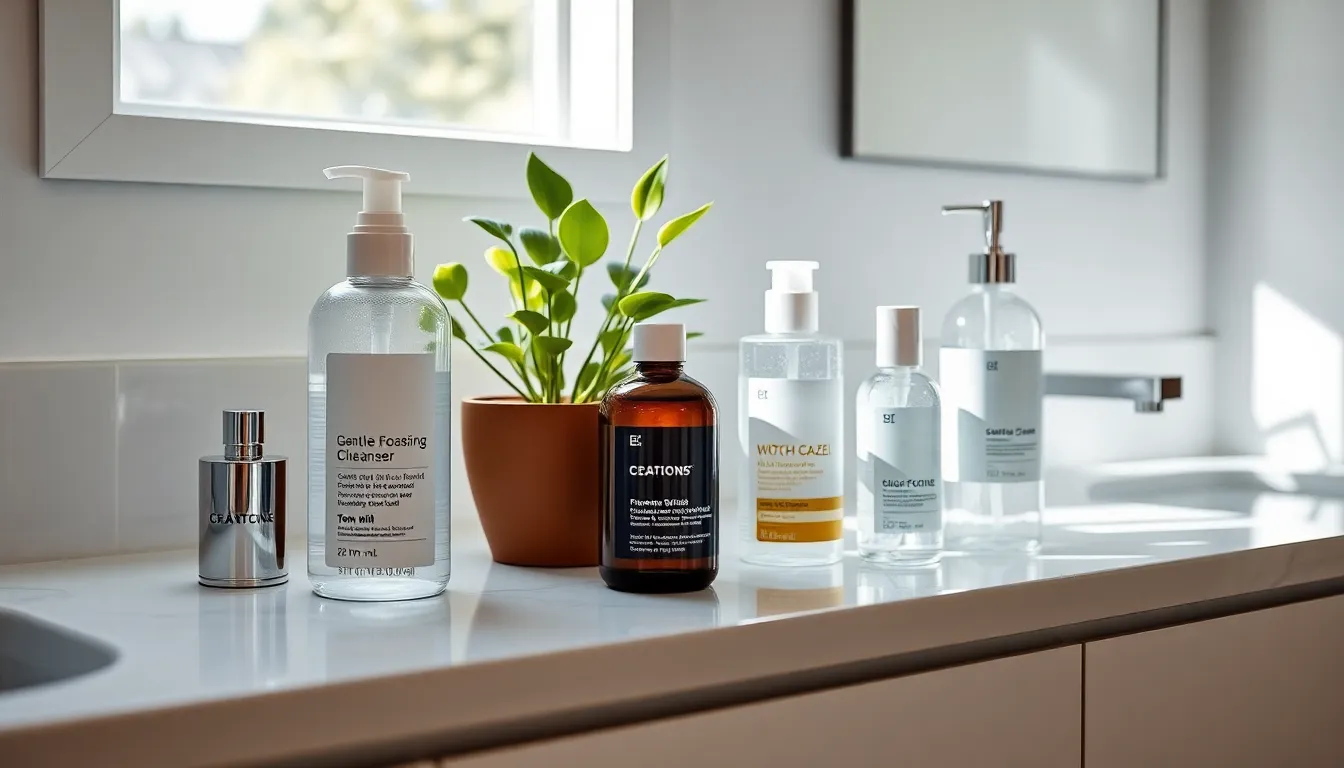Dealing with oily skin can feel like an uphill battle, can’t it? One minute you have that lovely glow (the kind they sell in fancy bottles), and the next minute, you resemble a walking oil slick. Fear not. Crafting the perfect skincare routine isn’t just possible: it’s a game-changer. Whether you’re new to skincare or seeking to refine your strategies, this guide will walk you through the ins and outs of pampering your unique complexion. So grab your favorite cleanser, and let’s jump into the oily skin jungle.
Table of Contents
ToggleUnderstanding Oily Skin

Common Causes of Oily Skin
Oily skin isn’t simply a “bad luck” genetic lottery: it stems from various factors. Hormonal fluctuations, particularly during adolescence or menstrual cycles, can crank up oil production. Also, stress and diet play a sneaky role. Has anyone ever noticed how cramming for that exam turns them into an oil fountain? And let’s not forget about how over-cleansing can actually trigger oil production, leading to that dreadful greasy feeling.
Importance of a Dedicated Skincare Routine
Ignoring oily skin can have its own set of repercussions. Pores tend to clog, leading to breakouts, and let’s be honest, nobody wants those unwelcome guests. A consistent skincare routine helps balance the skin’s natural oil levels, preventing excess shine while nourishing it adequately. A well-planned regimen isn’t just pampering: it’s essential for keeping that slickness at bay.
Essential Steps in an Oily Skin Routine
Cleansing: Choosing the Right Cleanser
The first step to conquering oily skin starts with cleansing. Opt for a gentle foaming or gel-based cleanser formulated specifically for oily skin. Look for keywords like “oil-free” or “non-comedogenic” on the label. They work to remove excess oil without stripping the skin of its necessary moisture. Using your cleanser twice daily – in the morning and evening – helps keep the shine under control.
Exfoliation: Frequency and Methods
Exfoliation might sound luxury-like, but it’s essential for oily skin. Aim to exfoliate 1-2 times a week using chemical exfoliants (hello, alpha and beta hydroxy acids) over physical scrubs. It eliminates dead skin cells that heap up, leading to blocked pores. The result? A fresher, smoother canvas that brilliantly reflects a “no more clogged pores” mantra.
Toning: Benefits of a Good Toner
Toning is often underestimated. This hydrating step further cleanses and tightens pores while balancing skin’s pH. Choose toners with ingredients like witch hazel or tea tree oil, which combat excess oil. And here’s the kicker – these toners can also calm inflammation caused by pesky breakouts. Who wouldn’t want that kick of clarity?
Moisturizing: Finding the Balance
Moisturizing oily skin might seem counterintuitive. But, skipping this step can lead the skin to overcompensate, producing more oil. Opt for lightweight, oil-free moisturizers or gels. Ingredients like hyaluronic acid or gel-based moisturizers ensure skin stays hydrated without the greasy aftermath.
Sun Protection: Essential for Oily Skin
Sunscreen isn’t just for sunny days at the beach. People with oily skin should especially prioritize sun protection. Look for lightweight formulations that are oil-free and matte finish. The sun can wreak havoc on skin health, leading to additional oiliness and premature aging.
Additional Treatments for Oily Skin
Spot Treatments for Breakouts
When breakouts decide to crash the party, spot treatments come to the rescue. Ingredients such as benzoyl peroxide or salicylic acid specifically target those pesky zits without causing a whole skin revolt. These treatments work best when applied directly on breakouts to minimize their lifespan.
Using Clay Masks for Excess Oil
Clay masks are a match made in oily skin heaven. They absorb excess oil while providing a gentle exfoliating effect. Incorporate a clay mask into your routine 1-2 times a week to detoxify the skin and help unclog pores, leaving your complexion refreshed and clean.
Incorporating Serums in Your Routine
Serums are lightweight and pack a punch. Opt for oil-free serums that contain niacinamide or salicylic acid. These potent ingredients help manage oil production and enhance skin texture, creating a balanced, radiant look.
Lifestyle Tips to Complement Your Routine
Dietary Changes for Healthier Skin
Eating a balanced diet full of antioxidants can make a significant difference. Foods rich in omega-3 fatty acids, such as salmon or flaxseeds, can reduce inflammation. On the flip side, cutting down on sugary and processed foods can help keep that oil production in check. Who knew your plate could play a significant role in your skincare journey?
The Role of Hydration
Never underestimate the power of hydration. Drinking adequate water daily doesn’t just keep your body functioning: it also supports skin health. Hydration helps balance oil production, making it a crucial aspect that complements an oily skin regimen. Aim for at least eight cups a day. Remember, hydration equals happy skin.
Stress Management Techniques
Finding effective stress management techniques can improve not just mental well-being but skin health too. Activities like yoga, meditation, or even indulging in a hobby reduce stress hormones, contributing to less oil production and fewer breakouts. It’s a win-win.



